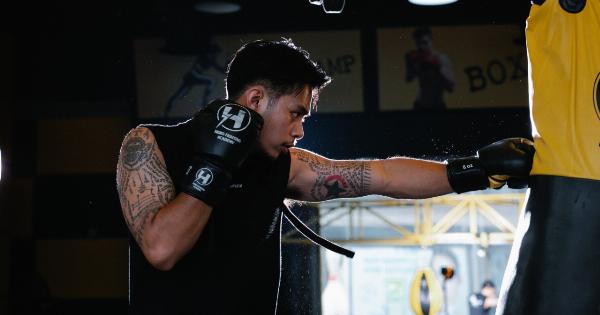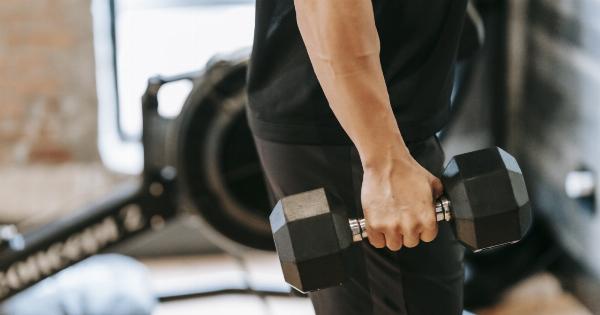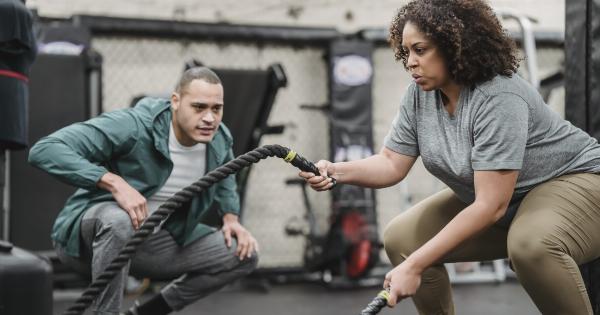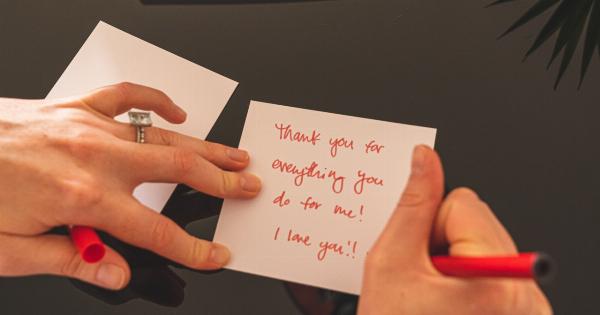Panic attacks can be distressing and horrifying. They can cause symptoms such as sweating, trembling, racing heartbeat, shortness of breath, and more. In severe cases, panic attacks can lead to a sense of impending doom, making the situation even worse.
If you’re looking for a way to deal with panic attacks naturally, breathing exercises can be a lifesaver. They help you calm down your panic attack symptoms and prevent them from escalating.
In this step-by-step guide, we’ll take a closer look at some of the best breathing exercises for panic attacks.
1. Belly Breathing
Belly breathing is a simple yet effective breathing exercise that helps you regulate your breathing and reduce the symptoms of panic attacks. Here’s how to do it:.
- Find a quiet and comfortable place where you can sit down or lie down.
- Place one hand on your chest and the other hand on your belly.
- Inhale deeply through your nose and feel your belly expand, pushing your hand out.
- Exhale slowly through your mouth and feel your belly contract, pulling your hand back in.
- Repeat this cycle for 5-10 minutes or until you feel calmer.
2. Box Breathing
Box breathing is another breathing exercise that can help regulate your breathing and calm your mind. The pattern of breathing involves holding your breath in between breaths, which can help lower anxiety levels. Here’s how to do it:.
- Find a quiet place where you can sit down or lie down.
- Breathe in deeply through your nose for four seconds.
- Hold your breath for four seconds.
- Breathe out slowly through your mouth for four seconds.
- Hold your breath for four seconds.
- Repeat this cycle for 5-10 minutes or until you feel calmer.
3. Pursed Lip Breathing
Pursed lip breathing is a breathing exercise that is designed to help regulate your breathing and reduce the symptoms of panic attacks. Here’s how to do it:.
- Relax your shoulder and neck muscles.
- Inhale deeply through your nose for two seconds.
- Purse your lips as if you are about to whistle.
- Exhale slowly through your pursed lips for four seconds.
- Repeat this cycle for 5-10 minutes or until you feel calmer.
4. Diaphragmatic Breathing
Diaphragmatic breathing is a breathing exercise that helps regulate your breathing by focusing on your diaphragm muscle. This exercise can help reduce the symptoms of panic attacks by slowing down the rate of your breathing. Here’s how to do it:.
- Find a quiet and comfortable place where you can sit down or lie down.
- Place one hand on your chest and the other hand on your belly.
- Inhale deeply through your nose and feel your belly expand, pushing your hand out.
- Exhale slowly through your mouth and feel your belly contract, pulling your hand back in.
- Repeat this cycle for 5-10 minutes or until you feel calmer.
5. Equal Breathing
Equal breathing is a breathing exercise that helps regulate your breathing and reduce the symptoms of panic attacks. It involves inhaling and exhaling for the same count of seconds, which can help stabilize your breathing and calm your mind.
Here’s how to do it:.
- Find a quiet and comfortable place where you can sit down or lie down.
- Inhale deeply through your nose for four seconds.
- Exhale slowly through your mouth for four seconds.
- Repeat this cycle for 5-10 minutes or until you feel calmer.
6. Humming Bee Breathing
Humming bee breathing is a breathing exercise that helps regulate your breathing and calm your mind. It involves creating a humming sound while breathing, which can help soothe your nervous system and reduce anxiety levels. Here’s how to do it:.
- Find a quiet and comfortable place where you can sit down or lie down.
- Place your index fingers on your ears.
- Inhale deeply through your nose.
- Exhale while making a humming sound with your lips pressed together.
- Repeat this cycle for 5-10 minutes or until you feel calmer.
7. Sama Vritti Breathing
Sama vritti breathing is a breathing exercise that helps regulate your breathing and reduce the symptoms of panic attacks. It involves inhaling and exhaling for the same count, which can help stabilize your breathing and calm your mind.
Here’s how to do it:.
- Find a quiet and comfortable place where you can sit down or lie down.
- Inhale for four counts.
- Hold your breath for four counts.
- Exhale for four counts.
- Hold your breath for four counts.
- Repeat this cycle for 5-10 minutes or until you feel calmer.
8. Body Scan Breathing
Body scan breathing is a breathing exercise that helps regulate your breathing and calm your mind. It involves focusing on your breath and on different parts of your body. Here’s how to do it:.
- Find a quiet and comfortable place where you can sit down or lie down.
- Close your eyes and focus on your breath.
- Take a deep breath in and focus on your toes.
- Exhale slowly and relax your toes.
- Take a deep breath in and focus on your feet.
- Exhale slowly and relax your feet.
- Repeat this cycle for each part of your body from your feet to your head.
9. Alternate Nostril Breathing
Alternate nostril breathing is a breathing exercise that helps regulate your breathing and reduce the symptoms of panic attacks. It involves inhaling and exhaling through alternate nostrils, which can help balance your breathing and calm your mind.
Here’s how to do it:.
- Find a quiet and comfortable place where you can sit down or lie down.
- Close your right nostril with your right thumb and inhale through your left nostril.
- Close your left nostril with your ring finger and exhale through your right nostril.
- Inhale through your right nostril.
- Close your right nostril and exhale through your left nostril.
- Repeat this cycle for 5-10 minutes or until you feel calmer.
10. Lion’s Breath Breathing
Lion’s breath breathing is a breathing exercise that helps regulate your breathing and reduce the symptoms of panic attacks. It involves making a loud roaring sound while exhaling, which can help release tension and reduce anxiety levels.
Here’s how to do it:.
- Find a quiet and comfortable place where you can sit down or lie down.
- Sit cross-legged with your hands on your knees.
- Breathe in deeply through your nose.
- Exhale deeply through your mouth while sticking out your tongue and roaring like a lion.
- Repeat this cycle for 5-10 minutes or until you feel calmer.
These ten breathing exercises are proven to help reduce the symptoms of panic attacks. Practice them regularly and you’ll find that you can take control of your panic attacks naturally and effectively.
Remember: If your panic attack symptoms are severe or regular, you should seek the help of a medical professional.



























